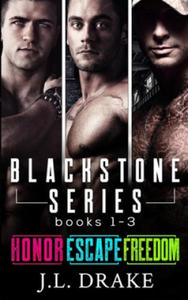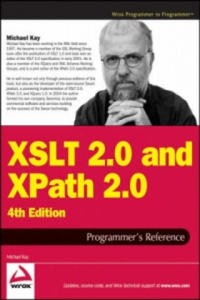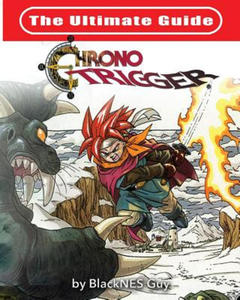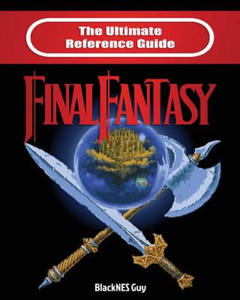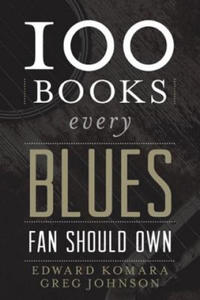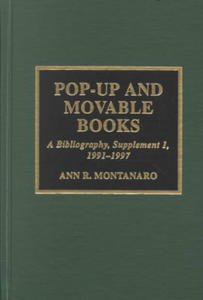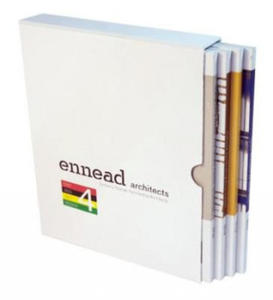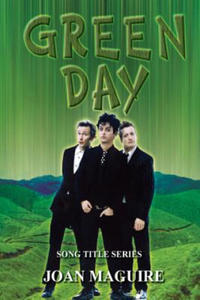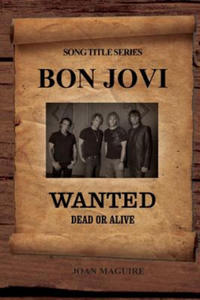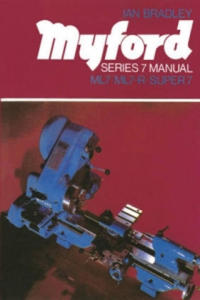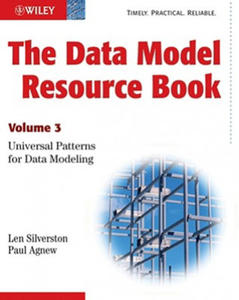libristo books llc reference series
- znaleziono 304 produkty w 17 sklepach
Blackstone Series: Books 1-3 LIMITLESS PUB LLC
Książki / Literatura obcojęzyczna
Soldiers. Unstoppable. Fearless. Protectors. The men of Blackstone will stop at nothing to keep their loved ones safe... HONOR, Book 1I fell to my knees. Normally, I could block out the pain, but not this time. Something wasn't right...The next thing I kne
Sklep: Libristo.pl
A Series Of Text-books On The English Language (Classic Reprint)
Książki Obcojęzyczne>Angielskie>Language>Reference & general
0x00b349f900000000
Sklep: Gigant.pl
XSLT 2.0 and XPath 2.0 Programmer's Reference 4e John Wiley & Sons Inc
Książki / Literatura obcojęzyczna
This book is primarily a practical reference book for professional XSLT developers. It assumes no previous knowledge of the language, and many developers have used it as their first introduction to XSLT; however, it is not structured as a tutorial, and there are other books on XSLT that provide a gentler approach for beginners. The book does assume a basic knowledge of XML, HTML, and the architecture of the Web, and it is written for experienced programmers. There's no assumption that you know any particular language such as Java or Visual Basic, just that you recognize the concepts that all programming languages have in common. The book is suitable both for XSLT 1.0 users upgrading to XSLT 2.0, and for newcomers to XSLT. The book is also equally suitable whether you work in the Java or .NET world. As befits a reference book, a key aim is that the coverage should be comprehensive and authoritative. It is designed to give you all the details, not just an overview of the 20 percent of the language that most people use 80 percent of the time.It's designed so that you will keep coming back to the book whenever you encounter new and challenging programming tasks, not as a book that you skim quickly and then leave on the shelf. If you like detail, you will enjoy this book; if not, you probably won't. But as well as giving the detail, this book aims to explain the concepts, in some depth. It's therefore a book for people who not only want to use the language but who also want to understand it at a deep level. The book aims to tell you everything you need to know about the XSLT 2.0 language. It gives equal weight to the things that are new in XSLT 2.0 and the things that were already present in version 1.0. The book is about the language, not about specific products. However, there are appendices about Saxon (the author's own implementation of XSLT 2.0), about the Altova XSLT 2.0 implementation, and about the Java and Microsoft APIs for controlling XSLT transformations, which will no doubt be upgraded to handle XSLT 2.0 as well as 1.0. A third XSLT 2.0 processor, Gestalt, was released shortly before the book went to press, too late to describe it in any detail. But the experience of XSLT 1.0 is that there has been a very high level of interoperability between different XSLT processors, and if you can use one of them, then you can use them all.In the previous edition we split XSLT 2.0 and XPath 2.0 into separate volumes. The idea was that some readers might be interested in XPath alone. However, many bought the XSLT 2.0 book without its XPath companion and were left confused as a result; so this time, the material is back together. The XPath reference information is in self-contained chapters, so it should still be accessible when you use XPath in contexts other than XSLT. The book does not cover XSL Formatting Objects, a big subject in its own right. Nor does it cover XML Schemas in any detail. If you want to use these important technologies in conjunction with XSLT, there are other books that do them justice. This book contains twenty chapters and eight appendixes (the last of which is a glossary) organized into four parts. The following section outlines what you can find in each part, chapter, and appendix. Part I: Foundations: The first part of the book covers essential concepts. You should read these before you start coding.If you ignore this advice, as most people do, then you read them when you get to that trough of despair when you find it impossible to make the language do anything but the most trivial tasks. XSLT is different from other languages, and to make it work for you, you need to understand how it was designed to be used. Chapter 1: XSLT in Context: This chapter explains how XSLT fits into the big picture: how the language came into being and how it sits alongside other technologies. It also has a few simple coding examples to keep you alert. Chapter 2: The XSLT Processing Model: This is about the architecture of an XSLT processor: the inputs, the outputs, and the data model. Understanding the data model is perhaps the most important thing that distinguishes an XSLT expert from an amateur; it may seem like information that you can't use immediately, but it's knowledge that will stop you making a lot of stupid mistakes. Chapter 3: Stylesheet Structure: XSLT development is about writing stylesheets, and this chapter takes a bird's eye view of what stylesheets look like.It explains the key concepts of rule-based programming using templates, and explains how to undertake programming-in-the-large by structuring your application using modules and pipelines. Chapter 4: Stylesheets and Schemas: A key innovation in XSLT 2.0 is that stylesheets can take advantage of knowledge about the structure of your input and output documents, provided in the form of an XML Schema. This chapter provides a quick overview of XML Schema to describe its impact on XSLT development. Not everyone uses schemas, and you can skip this chapter if you fall into that category. Chapter 5: The Type System: XPath 2.0 and XSLT 2.0 offer strong typing as an alternative to the weak typing approach of the 1.0 languages. This means that you can declare the types of your variables, functions, and parameters, and use this information to get early warning of programming errors. This chapter explains the data types available and the mechanisms for creating user-defined types. Part II: XSLT and XPath Reference: This section of the book contains reference material, organized in the hope that you can easily find what you need when you need it.It's not designed for sequential reading, though you might well want to leaf through the pages to discover what's there. Chapter 6: XSLT Elements: This monster chapter lists all the XSLT elements you can use in a stylesheet, in alphabetical order, giving detailed rules for the syntax and semantics of each element, advice on usage, and examples. This is probably the part of the book you will use most frequently as you become an expert XSLT user. It's a "no stone unturned" approach, based on the belief that as a professional developer you need to know what happens when the going gets tough, not just when the wind is in your direction. Chapter 7: XPath Fundamentals: This chapter explains the basics of XPath: the low-level constructs such as literals, variables, and function calls. It also explains the context rules, which describe how the evaluation of XPath expressions depends on the XSLT processing context in which they appear. Chapter 8: XPath: Operators on Items: XPath offers the usual range of operators for performing arithmetic, boolean comparison, and the like.However, these don't always behave exactly as you would expect, so it's worth reading this chapter to see what's available and how it differs from the last language that you used. Chapter 9: XPath: Path Expressions: Path expressions are what make XPath special; they enable you to navigate around the structure of an XML document. This chapter explains the syntax of path expressions, the 13 axes that you can use to locate the nodes that you need, and associated operators such as union, intersection, and difference. Chapter 10: XPath: Sequence Expressions: Unlike XPath 1.0, in version 2.0 all values are sequences (singletons are just a special case). Some of the most important operators in XPath 2.0 are those that manipulate sequences, notably the "for" expression, which translates one sequence into another by applying a mapping. Chapter 11: XPath: Type Expressions: The type system was explained in Chapter 5; this chapter explains the operations that you can use to take advantage of types. This includes the "cast" operation which is used to convert values from one type to another.A big part of this chapter is devoted to the detailed rules for how these conversions are done.Chapter 12: XSLT Patterns: This chapter returns from XPath to a subject that's specific to XSLT. Patterns are used to define template rules, the essence of XSLT's rule-based programming approach. The reason for explaining them now is that the syntax and semantics of patterns depends strongly on the corresponding rules for XPath expressions. Chapter 13: The Function Library: XPath 2.0 includes a library of functions that can be called from any XPath expression; XSLT 2.0 extends this with some additional functions that are available only when XPath is used within XSLT. The library has grown immensely since XPath 1.0. This chapter provides a single alphabetical reference for all these functions. Chapter 14: Regular Expressions: Processing of text is an area where XSLT 2.0 and XPath 2.0 are much more powerful than version 1.0, and this is largely through the use of constructs that exploit regular expressions. If you're familiar with regexes from languages such as Perl, this chapter tells you how XPath regular expressions differ. If you're new to the subject, it explains it from first principles.Chapter 15: Serialization: Serialization in XSLT means the ability to generate a textual XML document from the tree structure that's manipulated by a stylesheet. This isn't part of XSLT processing proper, so (following W3C's lead) it's separated it into its own chapter. You can control serialization from the stylesheet using an declaration, but many products also allow you to control it directly via an API. Part III: Exploitation: The final section of the book is advice and guidance on how to take advantage of XSLT to write real applications. It's intended to make you not just a competent XSLT coder, but a competent designer too. The best way of learning is by studying the work of others, so the emphasis here is on practical case studies. Chapter 16: Extensibility: This chapter describes the "hooks" provided in the XSLT specification to allow vendors and users to plug in extra functionality. The way this works will vary from one implementation to another, so we can't cover all possibilities, but one important aspect that the chapter does cover is how to use such extensions and still keep your code portable.Chapter 17: Stylesheet Design Patterns: This chapter explores a number of design and coding patterns for XSLT programming, starting with the simplest "fill-in-the-blanks" stylesheet, and extending to the full use of recursive programming in the functional programming style, which is needed to tackle problems of any computational complexity. This provides an opportunity to explain the thinking behind functional programming and the change in mindset needed to take full advantage of this style of development. Chapter 18: Case Study: XMLSpec: XSLT is often used for rendering documents, so where better to look for a case study than the stylesheets used by the W3C to render the XML and XSLT specifications, and others in the same family, for display on the web? The resulting stylesheets are typical of those you will find in any publishing organization that uses XML to develop a series of documents with a compatible look-and-feel. Chapter 19: Case Study: A Family Tree: Displaying a family tree is another typical XSLT application.This example with semi-structured data-a mixture of fairly complex data and narrative text-that can be presented in many different ways for different audiences. It also shows how to tackle another typical XSLT problem, conversion of the data into XML from a legacy text-based format. As it happens, this uses nearly all the important new XSLT 2.0 features in one short stylesheet. But another aim of this chapter is to show a collection of stylesheets doing different jobs as part of a complete application. Chapter 20: Case Study: Knight's Tour: Finding a route around a chessboard where a knight visits every square without ever retracing its steps might sound a fairly esoteric application for XSLT, but it's a good way of showing how even the most complex of algorithms are within the capabilities of the language. You may not need to tackle this particular problem, but if you want to construct an SVG diagram showing progress against your project plan, then the problems won't be that dissimilar. Part IV: Appendices: A ppendix A: XPath 2.0 Syntax Summary: Collects the XPath grammar rules and operator precedences into one place for ease of reference.Appendix B: Error Codes: A list of all the error codes defined in the XSLT and XPath language specifications, with brief explanations to help you understand what's gone wrong. Appendix C: Backward Compatibility: The list of things you need to look out for when converting applications from XSLT 1.0. Appendix D: Microsoft XSLT Processors: Although the two Microsoft XSLT processors don't yet support XSLT 2.0, we thought many readers would find it useful to have a quick summary here of the main objects and methods used in their APIs. Appendix E: JAXP: the Java API for XML Processing: JAXP is an interface rather than a product. Again, it doesn't have explicit support yet for XSLT 2.0, but Java programmers will often be using it in XSLT 2.0 projects, so the book includes an overview of the classes and methods available. Appendix F: Saxon: At the time of writing Saxon (developed by the author of this book) provides the most comprehensive implementation of XSLT 2.0 and XPath 2.0, so its interfaces and extensions are covered in some detail. Appendix G: Altova: Altova, the developers of XML Spy, have an XSLT 2.0 processor that can be used either as part of the development environment or as a freestanding component.This appendix gives details of its interfaces. Appendix H: Glossary Note: CD-ROM/DVD and other supplementary materials are not included as part of eBook file.
Sklep: Libristo.pl
Ultimate Reference Guide To Chrono Trigger Blacknes Guy Books
Książki / Literatura obcojęzyczna
Think you know Chrono Trigger? Think again This is the ultimate reference guide to Chrono Trigger on the SNES; part of The Ultimate Guide series from bestselling author The BlackNES Guy This book has ove
Sklep: Libristo.pl
Ultimate Reference Guide to Final Fantasy BlackNES Guy Books
Książki / Literatura obcojęzyczna
Think you know Final Fantasy? Think again This is the ultimate reference guide to Final Fantasy from the creator of The Ultimate Guide series; bestselling author The BlackNES Guy This book is a re
Sklep: Libristo.pl
Journey to the West, Books 1, 2 and 3 Imagin8 LLC
Książki / Literatura obcojęzyczna
This book is a compilation of the first three books - Rise of the Monkey King, Trouble in Heaven, and The Immortal Peaches - in our Journey to the West series of story books for people learning to read Chinese. These three stories all focus on the adventur
Sklep: Libristo.pl
100 Books Every Blues Fan Should Own Rowman & Littlefield
Książki / Literatura obcojęzyczna
Search the Internet for the 100 best songs or best albums. Dozens of lists will appear from aficionados to major music personalities. But what if you not only love listening to the blues or country music or jazz or rock, you love reading about it, too. How do you separate what matters from what doesn't among the hundreds-sometimes thousands-of books on the music you so love? In the Best Music Books series, readers finally have a quick-and-ready list of the most important works published on modern major music genres by leading experts. In 100 Books Every Blues Fan Should Own, Edward Komara, former Blues Archivist of the University of Mississippi, and his successor Greg Johnson select those histories, biographies, surveys, transcriptions and studies from the many hundreds of works that have been published about this vital American musical genre. Komara and Johnson provide a short description of the contents and the achievement of each title selected for their "Blues 100." Entries include full bibliographic citations, prices of copies in print, and even descriptions of specific editions for book collectors.100 Books Every Blues Fan Should Own also includes suggested blues recordings to accompany each recommended work, as well as a concluding section on key reference titles-or as Komara and Johnson phrase it: "The Books behind the Blues 100." 100 Books Every Blues Fan Should Own serves as a guide for any blues fan looking for a road map through the history of-and even history of the scholarship on-the blues. Here Komara and Johnson answer the question of not only what is a "blues" book, but which ones are worth owning.
Sklep: Libristo.pl
Pop-Up and Movable Books Scarecrow Press
Książki / Literatura obcojęzyczna
Pop-up and Movable Books (1993) was a pioneering work in the move to document this novel yet ubiquitous format. These fascinating volumes have been a frequent, yet under-scrutinized phenomenon from the Victorian era through to today. This supplement updates the work begun in the 1993 publication. Building upon the first volume, it indexes books published between 1991 and 1997. Books are accessible through three indexes: title, date, and series. The first volume should be consulted for titles older than 1991. Praise for the first edition: "...a pioneering attempt to codify a type of book that has previously slipped by librarians and bibliographers almost totally disregarded." -ANTIQUARIAN BOOK MONTHLY "...an essential tool for collectors...a useful addition to any library with an interest in children's literature or the history of book design. All in all, it is a well-organized, well-indexed, and thoroughly professional reference work." -POPULAR CULTURE IN LIBRARIES
Sklep: Libristo.pl
Bishop Brothers Series (Four Book Complete Set) Kennedy Fox Books, LLC
Książki / Literatura obcojęzyczna
Sklep: Libristo.pl
Ennead Profile Series 4 Polshek Partnership Architects LLC
Książki / Literatura obcojęzyczna
'The Profile Series' is comprised of books on single buildings, which together communicate the firm's sensibilities. Corresponding to Ennead Architects philosophy of creating a singular and appropriate architectural response to the particular program, site
Sklep: Libristo.pl
Royal Horse of Europe (Allen breed series) Echo Point Books & Media, LLC
Książki / Literatura obcojęzyczna
Sklep: Libristo.pl
Green Day Song Title Series Joan Maguire
Książki / Literatura obcojęzyczna
Legally I cannot use Lyrics or Music because of Copyright but I can use song titles and a total of 604 song titles (Italicized) have been used to make the story possible. Also due to the nature of my books; legally I must place a Reference (as it is down l
Sklep: Libristo.pl
Bon Jovi - Wanted Dead Or Alive Large Print Song Title Series Bon Jovi - Wanted Dead or Alive Large Print S
Książki / Literatura obcojęzyczna
Legally I can not use Lyrics or Music because of Copyright but I can use song titles and a total of 1,284 song titles (Italicized) have been used to make the main story possible. Also due to the nature of my books; legally I must place a Reference (as it i
Sklep: Libristo.pl
Myford Series 7 Manual Special Interest Model Books
Książki / Literatura obcojęzyczna
Ian Bradley's classic guide to using Myford 7 series metalworking lathes in the home workshop was first published in 1973. The author revised the work in the 1980s to include the ML7, Super 7 and ML7-R lathes, so that the contents of the book are as valuable to readers who have the latest type of lathe, as well as those who possess the earlier machines. This book is intended to be a workshop companion rather than simply a work of reference. It deals with the use of the lathe and the many items of equipment that have been provided for it.
Sklep: Libristo.pl
Data Model Resource Book - Universal Patterns for Data Modeling V3 John Wiley & Sons Inc
Książki / Literatura obcojęzyczna
This third volume of the best-selling "Data Model Resource Book" series revolutionizes the data modeling discipline by answering the question "How can you save significant time while improving the quality of any type of data modeling effort?" In contrast to the first two volumes, this new volume focuses on the fundamental, underlying patterns that affect over 50 percent of most data modeling efforts. These patterns can be used to considerably reduce modeling time and cost, to jump-start data modeling efforts, as standards and guidelines to increase data model consistency and quality, and as an objective source against which an enterprise can evaluate data models. Praise for The Data Model Resource Book, Volume 3 "Len and Paul look beneath the superficial issues of data modeling and have produced a work that is a must for every serious designer and manager of an IT project."-Bill Inmon, World-renowned expert, speaker, and author on data warehousing and widely recognized as the "father of data warehousing" "The Data Model Resource Book, Volume 3: Universal Patterns for Data Modeling is a great source for reusable patterns you can use to save a tremendous amount of time, effort, and cost on any data modeling effort. Len Silverston and Paul Agnewhave provided an indispensable reference of very high-quality patterns for the most foundational types of datamodel structures. This book represents a revolutionary leap in moving the data modeling profession forward." -Ron Powell, Cofounder and Editorial Director of the Business Intelligence Network "After we model a Customer, Product, or Order, there is still more about each of these that remains to be captured, such as roles they play, classifications in which they belong, or states in which they change. The Data Model Resource Book, Volume 3: Universal Patterns for Data Modeling clearly illustrates these common structures.Len Silverston and Paul Agnew have created a valuable addition to our field, allowing us to improve the consistency and quality of our models by leveraging the many common structures within this text." -Steve Hoberman, Best-Selling Author of Data Modeling Made Simple "The large national health insurance company I work at has actively used these data patterns and the (Universal Data Models) UDM, ahead of this book, through Len Silverston's UDM Jump Start engagement. The patterns have found their way into the core of our Enterprise Information Model, our data warehouse designs, and progressively into key business function databases. We are getting to reuse the patterns across projects and are reaping benefits in understanding, flexibility, and time-to-market. Thanks so much." -David Chasteen, Enterprise Information Architect "Reusing proven data modeling design patterns means exactly that. Data models become stable, but remain very flexible to accommodate changes. We have had the fortune of having Len and Paul share the patterns that are described in this book via our engagements with Universal Data Models, LLC.These data modeling design patterns have helped us to focus on the essential business issues because we have leveraged these reusable building blocks for many of the standard design problems. These design patterns have also helped us to evaluate the quality of data models for their intended purpose. Many times there are a lot of enhancements required. Too often the very specialized business-oriented data model is also implemented physically. This may have significant drawbacks to flexibility. I'm looking forward to increasing the data modeling design pattern competence within Nokia with the help of this book." -Teemu Mattelmaki, Chief Information Architect, Nokia "Once again, Len Silverston, this time together with Paul Agnew, has made a valuable contribution to the body of knowledge about datamodels, and the act of building sound data models. As a professional data modeler, and teacher of data modeling for almost three decades, I have always been aware that I had developed some familiar mental "patterns" which I acquired very early in my data modeling experience.When teaching data modeling, we use relatively simple workshops, but they are carefully designed so the students will see and acquire a lot of these basic "patterns" - templates that they will recognize and can use to interpret different subject matter into data model form quickly and easily. I've always used these patterns in the course of facilitating data modeling sessions; I was able to recognize "Ah, this is just like ...," and quickly apply a pattern that I'd seen before. But, in all this time, I've never sat down and clearly categorized and documented what each of these "patterns" actually was in such a way that they could be easily and clearly communicated to others; Len and Paul have done exactly that. As in the other Data Model Resource Books, the thinking and writing is extraordinarily clear and understandable. I personally would have been very proud to have authored this book, and I sincerely applaud Len and Paul for another great contribution to the art and science of data modeling. It will be of great value to any data modeler." -William G. Smith, President, William G. Smith & Associates, www.williamgsmith.com "Len Silverston and Paul Agnew's book, Universal Patterns for Data Modeling, is essential reading for anyone undertaking commercial datamodeling.With this latest volume that compiles and insightfully describes fundamental, universal data patterns, The Data Model Resource Book series represents the most important contribution to the data modeling discipline in the last decade." -Dr. Graeme Simsion, Author of Data Modeling Essentials and Data Modeling Theory and Practice "Volume 3 of this trilogy is a most welcome addition to Len Silverston's two previous books in this area. Guidance has existed for some time for those who desire to use pattern-based analysis to jump-start their data modeling efforts. Guidance exists for those who want to use generalized and industry-specific data constructs to leverage their efforts. What has been missing is guidance to those of us needing guidance to complete the roughly one-third of data models that are not generalized or industry-specific. This is where the magic of individual organizational strategies must manifest itself, and Len and Paul have done so clearly and articulately in a manner that complements the first two volumes of The Data Model Resource Book.By adding this book to Volumes 1 and 2 you will be gaining access to some of the most integrated data modeling guidance available on the planet." -Dr. Peter Aiken, Author of XML in Data Management and data management industry leader VCU/Data Blueprint
Sklep: Libristo.pl
szukaj w Kangoo libristo books llc reference series
Sklepy zlokalizowane w miastach: Warszawa, Kraków, Łódź, Wrocław, Poznań, Gdańsk, Szczecin, Bydgoszcz, Lublin, Katowice
Szukaj w sklepach lub całym serwisie
1. Sklepy z libristo pl books llc reference series
2. Szukaj na wszystkich stronach serwisu
t1=0.063, t2=0, t3=0, t4=0.026, t=0.063

